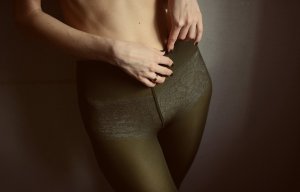
International hosiery market set for transformation
Morocco is aiming to create a fully integrated textile and garment industry within 15 years, with circular knitting to be one of the target growth areas.

18th June 2015
Knitting Industry
|
Casablanca
Morocco is aiming to create a fully integrated textile and garment industry from spinning to final product within 15 years and has its sights set on the nearby European market and even the USA. Cotton and synthetic spinning, circular knitting and weaving are to be target growth areas.
According to a news item published on Africanreview.com yesterday the plans were disclosed by Mohammed Tazi, director general of Morocco’s clothing and textile industry association AMITH (Association Marocaine des Industries du Textile et de l’Habillement).
The Moroccan government and industry would work to create backward linkages supporting a fast fashion segment serving Europe’s nearby markets, and a Moroccan fashion segment for domestic consumers drawing on strengths in Morocco-based design and traditions, the news website revealed.
Preparatory work and investments would be made until 2020, after which the government and industry would accelerate building a textile and clothing value chain.
Apparently AMITH has been working since 1996 to bring together different parts of the industry together and fast fashion is currently very important according to Tazi.
The textile and garment sector were reported by AMITH to account for 9-10% of GDP in 2014 and it and the government are said to want the industry to grow to 13% of GDP over the next five years. According to the article it already accounted for 20% of all exports by value in 2013.
The association also wants to create fashion brands utilising traditional Moroccan and African styles, cuts and sizes for the Moroccan market.
Spain’s Inditex Group has been a long-term important buyer for around 150 of Morocco’s garment producers with 100 million pieces being made in the country for Inditex in 2014 alone.
Spain accounts for almost 40% of Morocco’s fast fashion export sales, followed by France, UK, Germany and Italy.
Tangiers based garment producer Salsabile, which manufactures for UK brands such as Topshop and Marks & Spencer, is looking for sales from the USA. “This last year we started two big projects: we began exporting to American Eagle in the US and our brand Yamanda, which sells primarily to Moroccan women,” Redouane Lachgar, the company’s commercial and development director told African Review.
According to Lachgar there is a need is for foreign investors. “If Turkish or Chinese investors come here, it is possible. With China we need to make a partnership to sell to their customers in the area of fast fashion,” he added.
Sourcing giant Li & Fung is said to be currently exploring the creation of a Moroccan base.
According to the article, the weakest points in Morocco’s value chain are yarns and fabrics, although there is established expertise in woollens and denim-weaving in Meknes, near Fes-based weaver Sefita, which sells to Marks & Spencer and to clients across northern Europe.
According to Tazi, cotton and synthetics spinning, circular knitting and weaving are target growth areas while the development of eco-fibres such as agave and bamboo would be explored. Currently, most fabrics are imported from China or Turkey and, for Morocco-based brands and manufacturers, gaining access to affordable good quality fabrics is said to be challenging.

Business intelligence for the fibre, textiles and apparel industries: technologies, innovations, markets, investments, trade policy, sourcing, strategy...
Find out more